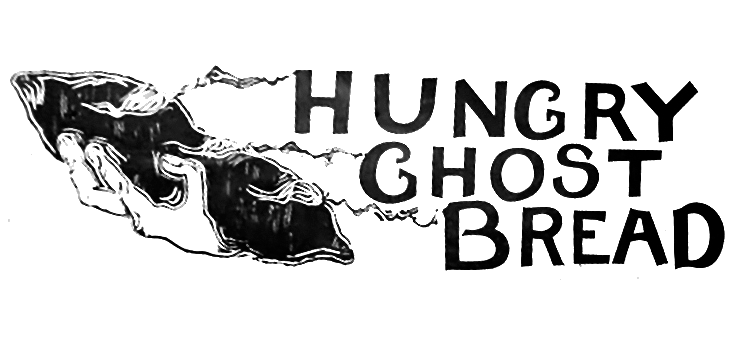A sourdough culture is a mixture of wild yeast and lactobacillus, a variety of bacteria, that lives in a mixture of flour and water. Sourdough bread is not necessarily sour bread. Sourdough bread may be somewhat sour or very sour, or it may actually be quite mildly flavored with rich, complex delicious wheat flavors. Breads made with commercial bakers’ yeast do not produce the same results in terms of flavor, texture and shelf life as natural leaven starters do. Additionally, the fermentation of the sourdough changes the nature of the starches in the bread, creating a more beneficial bread. People with allergies to commercially yeasted breads may not have the same sensitivities to naturally leavened sourdough bread. With sourdough bread, complex carbohydrates are broken down into more digestible simple sugars and protein is broken down into amino acids. Enzymes develop during proofing which are not lost in baking. Eating good quality bread aids the digestion of all complex carbohydrate foods including other grains, beans, and vegetables. It helps restore the functioning of the digestive tract, resulting in proper assimilation and elimination.
What does “Hungry Ghost” mean?
Hungry Ghost is a reference to Buddhist theology where there a few varying definitions of hungry ghost. The one most commonly used at the shop is that the sourdough starter is our hungry ghost. Hungry ghosts are spirits of insatiable desire, they can never be satisfied. We have to feed our starter twice a day or it will die. It has an insatiable appetite so it is our spirit of insatiable desire.
How long have you been here?
Hungry Ghost Bread’s grand opening was on April 10th – 2004. A few friends and family were expected. By mid-morning the shelves were empty and more could not be baked fast enough to keep pace with the demand. Some days, (particularly Saturdays and holidays), are still like that – no matter how early the baker and the fire maker rise.
Can I reserve bread?
No. We stopped taking reservations when the pandemic hit, all of our bread is not first come first serve.
Can you slice or why are good knives the greatest thing since unsliced bread?
We don’t slice our bread for customers. Our bread is usually too warm and too crusty for a slicer. It also lasts much longer unsliced.
Do you make rolls?
No.
Hot bread?
If you come in just after a bake (bakes come out between 10am and 2pm) you can get a loaf of hot bread. But it is advised to not eat it until it has cooled down all the way. Having the bread cool is part of the baking process where the bread is still forming it’s full flavor and texture. If you want to eat hot bread it is recommended to let it cool all the way and then pop it in a hot oven again. That way you have the full flavor and texture and the heat.
Do you have Italian bread?
Italian bread, French Bread, Spanish Bread, Portuguese bread: it’s all white crusty stuff. Here at Hungry Ghost we call it French Batard.
Gluten-Free Bread?
Gluten is what makes the difference between bread and not-bread: crackers, cooked grain, crepes. Gluten is what allows the dough to develop to trap the gases released in fermentation and rise into a loaf. It is possible, perhaps, to compensate for the lack of gluten in a non-wheat flour by adding eggs or agar or tapioca to approximate a loaf, albeit in a loaf pan. But if we’re doing that for gluten-intolerant people or celiac disease sufferers, then it would need to be quarantined from all the wheat flour dust already in the air of our little shop.
How is that spelt?
Spelt is an ancient grain with a deep nut-like flavor. Although it is genetically wheat, spelt may be an alternative for people who are intolerant of wheat. Unlike wheat where bran and germ are usually removed during milling, the vital substances of spelt are found in the inner kernel of the grain. Due to spelt’s high water solubility, the grain’s vital substances can be absorbed quickly into the body. The nutrients are made available to the entire organism with a minimum of digestive work. The body cells are then nourished, strengthened, and prepared for their optimal performance while the body is flooded with vitamins and other nutritional substances. Spelt contains more protein and also has large amounts of Vitamin B17. It also contains special carbohydrates which stimulate the body’s immune system.
Do you bake the bread in that oven?
YES! We built the oven along side our mason, Dennis Lombardi and his daughter, Gina. It took the better part of five weeks and more than a few odd socks to rub the color just right. The oven is a hybrid of a traditional wood-fired oven and a masonry stove. The design allows us to reheat the air temperature of the oven between each bake. Bread is baked throughout the day – just about every hour and a half 50+ loaves come out of the oven.
What does the “YES” flag mean?
YES! As in the life affirming YES!
YES! We are open.
Storing the bread and other strategies for extending the life of the loaf from heel to heel
A bread box really does help to keep the bread fresher for a longer period of time. Storing the open loaf cut side down on the counter is also effective. This bread freezes quite well either cut into slices or as a whole or portion thereof. Sliced bread can be removed from the freezer as needed and either toasted or left for a few minutes to thaw. Sometimes it is even beneficial to pack a sandwich on frozen bread. A plastic bag is ideal for the freezer, otherwise, placing bread in a plastic bag is only a good short term storage solution as plastic creates the perfect environment for anaerobic mold.

